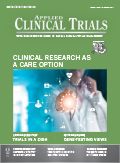FDA Promotes Surrogate Endpoints, ‘Seamless’ Clinical Trials
Applied Clinical Trials
Jill Wechsler details new FDA policies to streamline drug development, including the design of “seamless” trials.
As part of efforts to speed patient access to effective new therapies, FDA is rolling out policies designed to
Jill Wechsler

streamline drug development, particularly for new cancer therapies to treat life-threatening conditions. A new guidance outlines how sponsors may compress the traditional three-phase trial into one continuous, or “multiple expansion cohort study,” to reduce the time and cost involved in devising trials for early stages of multi-phase oncology research programs.
The draft guidance maps out the process for shifting from the traditional clinical trial process to a continuous, or adaptive, study to expedite the conduct of first-in-human studies for patient populations with serious diseases where no cure is available (see http://bit.ly/2nZ0vN7). This approach utilizes a single protocol with an initial dose-escalation phase to determine a potentially effective dose. That dose then can be evaluated for safety and effectiveness in additional patient cohorts, similar to the role of Phase II studies. FDA recognizes that such trails may expose patients to drugs with unknown toxicity and possibly limited benefit, and thus limits this approach to studies involving individuals with serious conditions. The agency also requires sponsors to establish systems for rapid data collection and evaluation and for continual oversight to quickly detect unexpected results.
FDA also is encouraging wider use of surrogate endpoints in clinical research by publishing a list of those markers that sponsors have used to gain approval of new drugs and biologics. The list was specified by the 21st Century Cures Act to facilitate medical product development. It provides information on surrogate endpoints that have supported market applications, as well as those utilized as primary endpoints in trials, but not as the basis for filing a new drug application (NDA) or biologics license application (BLA) (see http://bit.ly/2Cp9HEB). FDA notes that it will evaluate the use of surrogate endpoints in a particular development program on a case-by-case basis, and that it will update the list every six months.
FDA Commissioner Scott Gottlieb heralded the seamless trial approach as a way to avoid costly and long delays between the end and start of clinical study phases (see https://bit.ly/2Oklq8Y). FDA outlines in the guidance which drugs are best suited for expansion cohort studies, what information sponsors should provide in investigational new drug (IND) applications to support such studies, safeguards needed to protect patients, and when to consult FDA on planning and conducting these types of innovative studies. A main theme promoted by Gottlieb is that more efficient research approaches can lower the cost of drug development and translate into less expensive new therapies, but such benefits have not been that apparent.
Senate spending bills give minor boost to agency
Instead of taking the usual August recess, the Senate stayed in Washington to approve several multi-agency budget bills for the government fiscal year that begins Oct. 1. The measures boost funding for FDA and the National Institutes of Health (NIH)-and include a contentious provision that requires biopharma companies to disclose product prices in direct-to consumer (DTC) advertising.
The DTC ad measure was added to a major Senate appropriations bill for the Departments of Labor, Education and Health and Human Services (HHS). That legislation provides a $2.3 billion increase in NIH funding, to $39 billion, with some of that directed to combat the opioid epidemic by supporting NIH research to develop non-addictive pain therapies.
Most notable is an amendment that aims to provide consumers with more information on drug costs by instructing HHS to develop and implement rules requiring manufacturers to list drug prices in ads. This provision most likely will involve a formal rulemaking process to clarify what information (list or discounted prices?) should be disclosed and how the policy would be implemented.
In another major funding bill for the Department of Agriculture and other agencies, the Senate approved a $159 million budget increase for FDA, to bring its resources up to $5.4 billion for 2019, including more than $2 billion in user fees. The Senate plan, though, provides much less than the $400 million hike for FDA requested by the administration, and is well below the $308 million boost approved by House committees. The Senate provides FDA an additional $88.5 million to enhance medical product development and oversight, compared to $260 million proposed in the House, with the added funds directed to advance drug and medical device manufacturing, modernize general drug development, and support new science to evaluate drugs.
Senate leaders hope that their House colleagues will agree to negotiate final funding packages through conference committees, instead of waiting for formal House approval of separate budget bills. All parties want to finalize these spending bills before Oct. 1, when the government could shut down without approved funding for the 2019 fiscal year.
Jill Wechsler is the Washington Correspondent for Applied Clinical Trials.

FDA Fast Tracks Johnson & Johnson’s Nipocalimab for Fetal Neonatal Alloimmune Thrombocytopenia
March 27th 2024Johnson & Johnson is moving forward with a pair of Phase III trials of nipocalimab to reduce the risk of fetal neonatal alloimmune thrombocytopenia in alloimmunized pregnant patients.